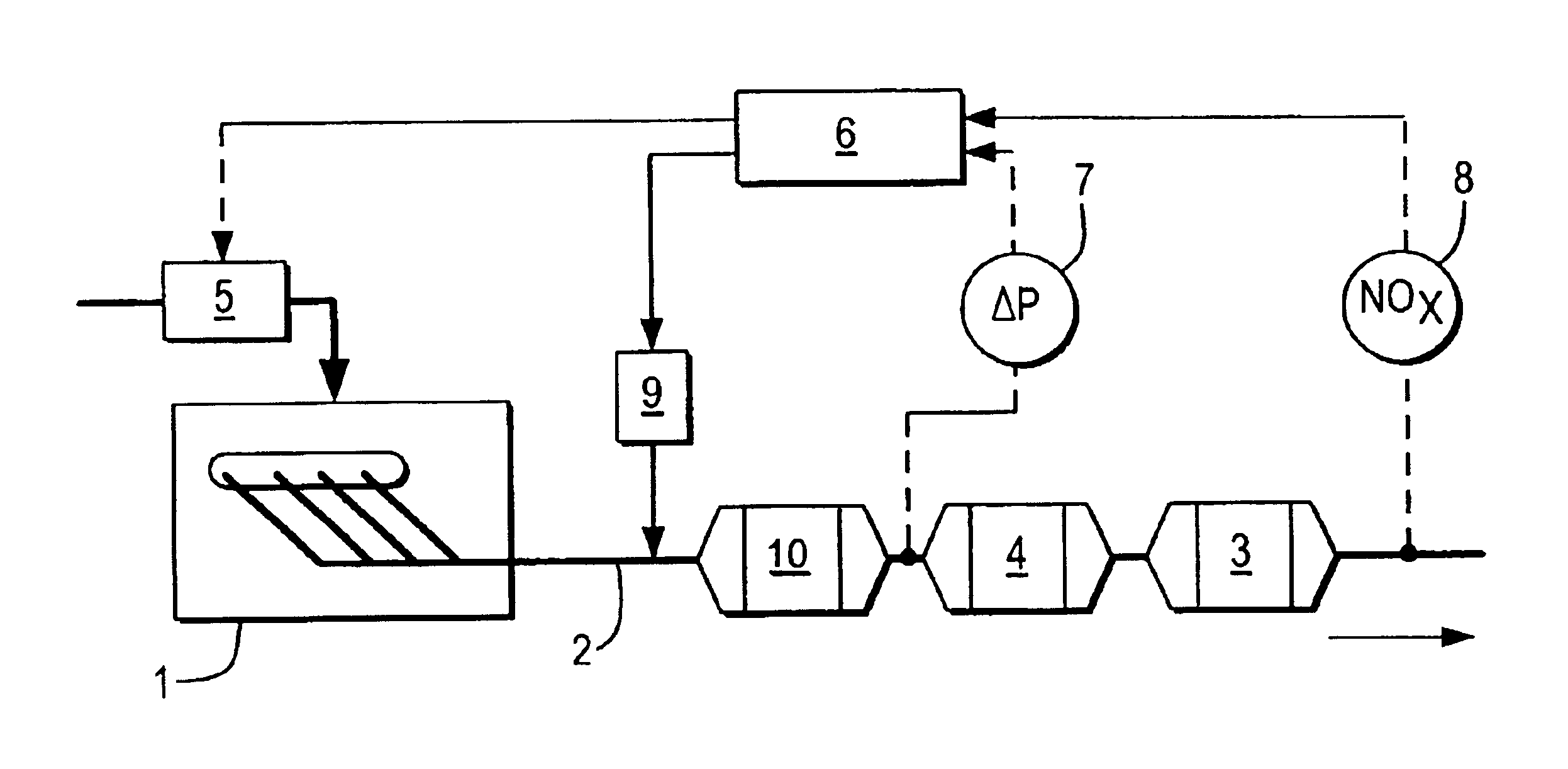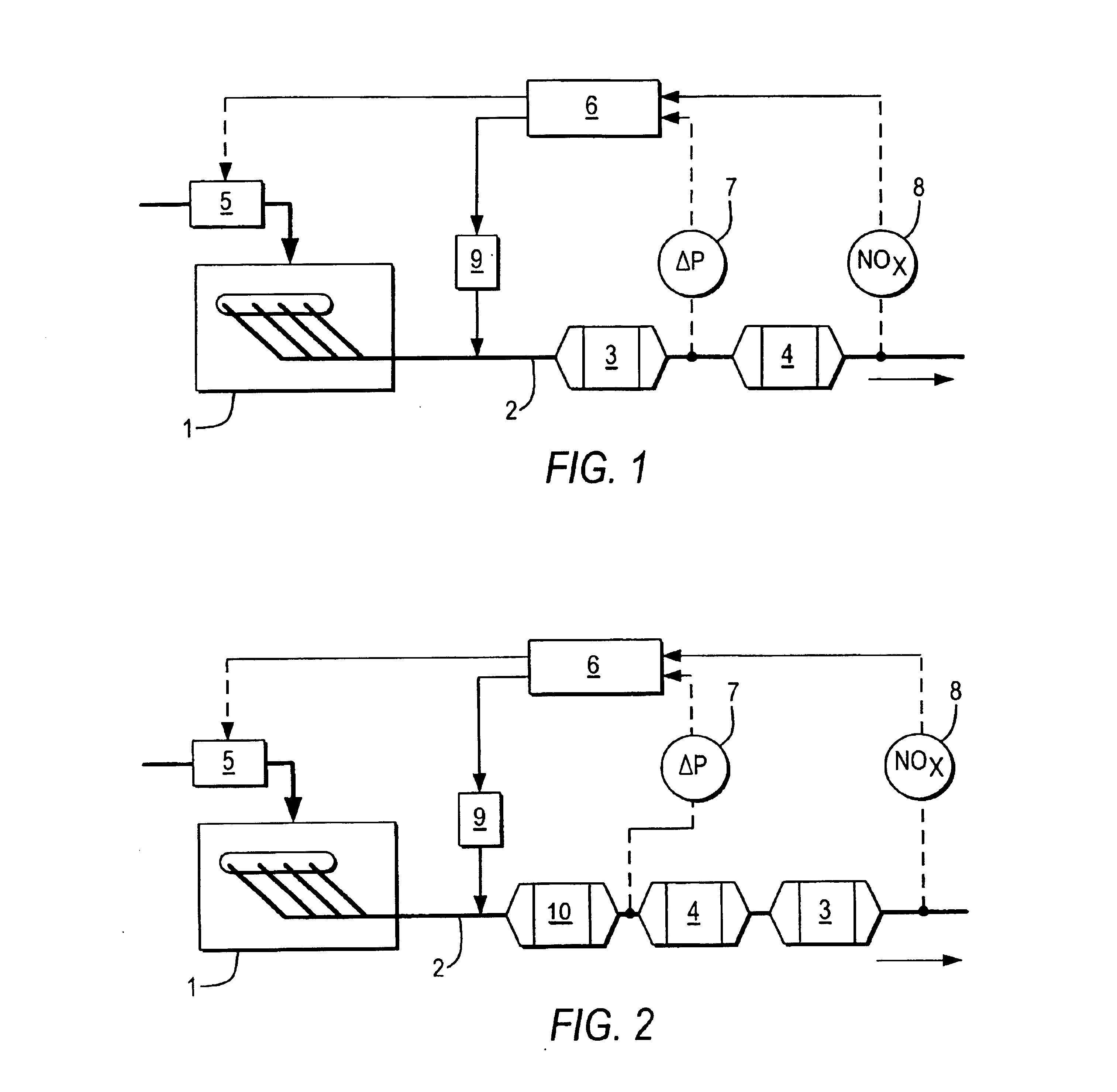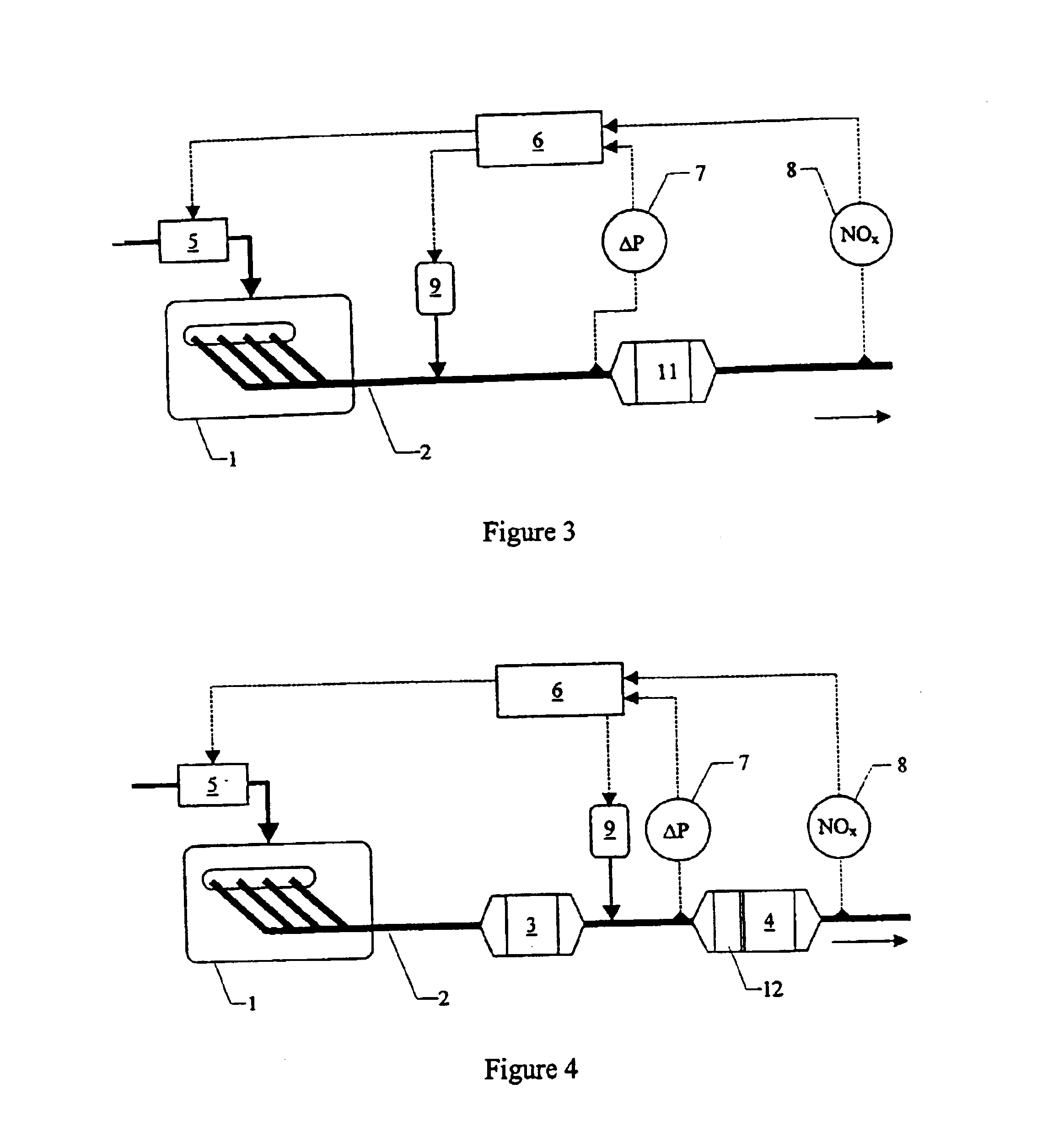Method for removing nitrogen oxides and particulates from the lean exhaust gas of an internal combustion engine and exhaust gas emission system
- Summary
- Abstract
- Description
- Claims
- Application Information
AI Technical Summary
Benefits of technology
Problems solved by technology
Method used
Image
Examples
second embodiment
[0056]The arrangement of FIG. 2 is suitable for conducting the method in accordance with the invention. The nitrogen oxide storage catalyst here is arranged after the particulate filter. Now there is an oxidation catalyst (10) in front of the particulate filter, on which the hydrocarbons are burned to increase the exhaust gas temperature for regeneration of the particulate filter.
third embodiment
[0057]The arrangement of FIG. 3 is suitable for conducting the process in accordance with a It illustrates a coated particulate filter (11) that is either coated on the inlet and outlet sides with a nitrogen oxide storage catalyst or that has a particulate ignition coating on the inlet side and the nitrogen oxides storage catalyst on the outlet side. As another alternative the particulate filter can be provided on the inlet side with an oxidation catalyst and on the outlet side with the nitrogen oxide storage catalyst.
fourth embodiment
[0058]FIG. 4 shows an arrangement for conducting the invention. In this embodiment an oxidation catalyst (12) is connected in the exhaust gas stream immediately in front of the particulate filter. There is also the possibility of applying this oxidation catalyst as a coating on the inlet side of the particulate filter.
PUM
| Property | Measurement | Unit |
|---|---|---|
| Temperature | aaaaa | aaaaa |
| Concentration | aaaaa | aaaaa |
| Ratio | aaaaa | aaaaa |
Abstract
Description
Claims
Application Information
 Login to View More
Login to View More - R&D
- Intellectual Property
- Life Sciences
- Materials
- Tech Scout
- Unparalleled Data Quality
- Higher Quality Content
- 60% Fewer Hallucinations
Browse by: Latest US Patents, China's latest patents, Technical Efficacy Thesaurus, Application Domain, Technology Topic, Popular Technical Reports.
© 2025 PatSnap. All rights reserved.Legal|Privacy policy|Modern Slavery Act Transparency Statement|Sitemap|About US| Contact US: help@patsnap.com



